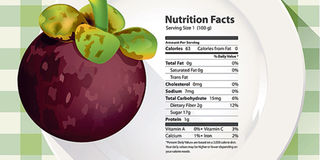Understanding the nutritional labels on food products

Many packaged foods have nutrition labels. However, some products may not have the labels for reasons like difficulty in providing them on very small packages. FILE PHOTO | NMG
What you need to know:
- Nutrition labels display the content levels of energy and seven nutrients (protein, carbohydrates, total fat, saturated fat, trans fat, sodium and sugars).
- Nutrition claims, on the other hand, are eye-catching descriptions found on food packages. They can serve as a quick reference for selected nutrition information.
- Nutrition claims are further categorised into nutrient content claim, nutrient comparative claim and nutrient function claim.
- Lastly, the nutrient function claim describes the physiological role of a nutrient in growth, development and normal functions of the body.
Nutrition information on food labels is a very important health tool for the public.
Such information assists consumers to better understand the nutritional value of their food. It enables them to compare the value of similar food products and then make healthy choices based on the relevant nutrition information.
For those who are on special diets, for example the diabetics, nutrition information on food labels enables them to select suitable foods that help manage their conditions.
There are two types of nutrition information on food labels; nutrition labelling and nutrition claims. Nutrition labelling involves a systematic way of presenting information of food products.
It is usually in a tabular format with a heading like “Nutrition information”, “Nutrition Facts” or “Nutrition Label”.
Nutrition labels display the content levels of energy and seven nutrients (protein, carbohydrates, total fat, saturated fat, trans fat, sodium and sugars).
Nutrition claims, on the other hand, are eye-catching descriptions found on food packages. They can serve as a quick reference for selected nutrition information.
They may highlight the content of certain nutrients, inform you how the nutritional content of a particular food product differs from a similar one or describe the physiological function of a nutrient, which is present in the food.
Therefore, nutrition labels and nutrition claims serve two different purposes. Nutrition labels provide consumers with information on energy and nutrient values of the food so that they can make use it to choose foods that are good for their health.
Nutrition claims, on the other hand, are just used as a quick reference. The content value of the claimed nutrient can be found on the nutrition label. At any time, consumers should not focus only on the claimed nutrients.
They should always refer to the nutrition label for detailed information on the overall nutritional composition of the food product for making healthy food choices.
NUTRIENT CONTENT
Consumers should understand the real meaning behind each claim. For example, when you come across a claim of ‘low sugars’, they should know that the product should contain not more than 5g of sugars per 100g/ml of the food.
Although a product with a ‘low sugars’ claim should have a low enough sugars content to bear such claim, the consumer should always refer to the nutrition label to ascertain that the product does not have high contents of fat or energy, particularly if he is interested in weight management.
In addition, a product with a ‘sugars free’ claim does not necessarily mean that it is free of carbohydrates. Consumers, particularly the diabetics, should refer to the nutrition label to verify the carbohydrates content of the product.
Nutrition claims are further categorised into nutrient content claim, nutrient comparative claim and nutrient function claim.
The nutrient content claim is related to the contents of nutrients found in food. It describes the level of a nutrient contained in a food, such as, ‘low fat’, ‘sugars free’ and ‘high calcium’.
The commonly used nutrient content claims are ‘free’, ‘very low’, ‘low’, ‘source’ and ‘high’. Words with similar meaning may be used as well.
Also related to contents of nutrients found in food is the nutrient comparative claim. However, rather than describing the nutrient level, this claim compares the nutrient levels of two or more similar food products, such as ‘Reduced fat-25 per cent less than the regular product of the same brand’. Similar to nutrient content claims, wordings with similar meaning may be used.
Lastly, the nutrient function claim describes the physiological role of a nutrient in growth, development and normal functions of the body.
NUTRITION LABELS
For example, ‘calcium builds strong bones’ or ‘protein helps build and repair body tissues’. Such a claim must be supported by science and the information about the physiological role of the claimed nutrient must be included in the claim.
Many packaged foods have nutrition labels. However, some products may not have the labels for reasons like difficulty in providing them on very small packages.
Also, foods like tea leaves and spices that contain insignificant amount of energy and specified nutrients, or raw meat, fresh fruits and vegetables that do not have any addition of ingredients may not have labels.
So, how do you read a nutrition label?
Serving size
First, you should identify the serving size and the number of servings that appear on the food package. Serving sizes are standardised quantities that make it easier to compare similar foods with familiar units, such as cups or pieces. Then read the metric amount of each nutrient like the number of grammes.
Calories
Check for calories information. Calories provide a measure of how much energy is obtained from a serving of food.
The unit should be in kilojoules (kJ), kilocalories (kcal) or calories (cal).
Limit these nutrients
Nutrients including fat, cholesterol and sodium should be limited in their intake and eaten in moderate amounts.
Get enough of these nutrients
Get enough dietary fibre, Vitamin A, Vitamin C, calcium, and iron in every diet.
The writer is based at the Department of Human Nutrition, Egerton University.




